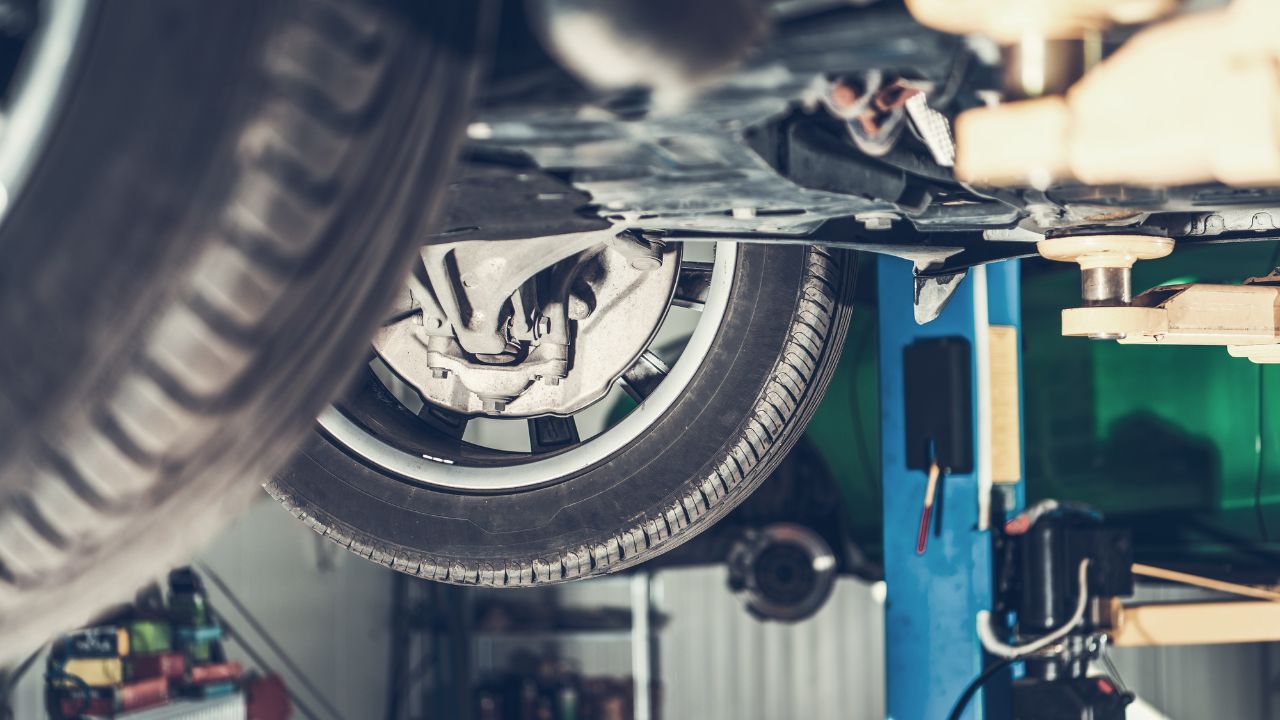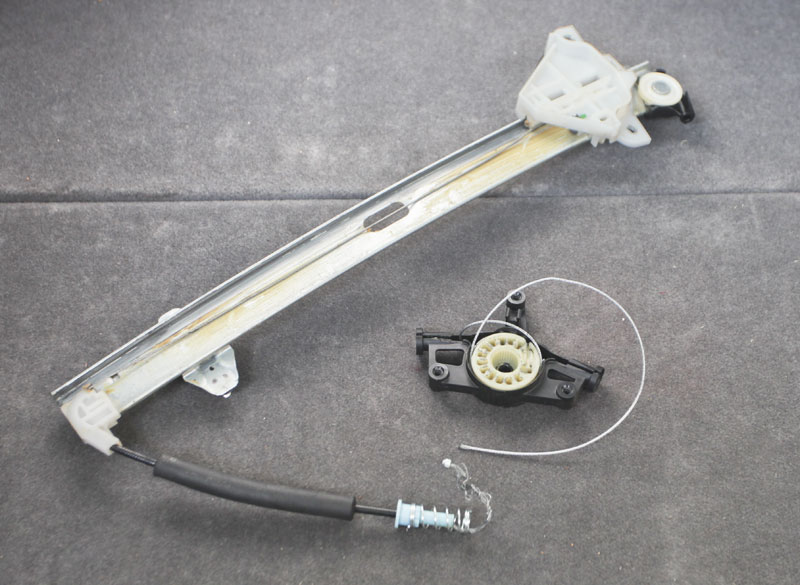
If you are wondering how to test alternator voltage, you have come to the right place. You have many options to help diagnose the problem. Make sure you follow the tips in this article to test alternator voltage properly. You'll be able to drive without any problems in no time. To begin, turn off your car and remove the battery. Once you have removed the battery, you should be able to check the voltage at the alternator.
The diodes are checked
The diodes are the most important part of diagnosing an alternator issue. The diodes allow current to pass through the alternator and reach its battery. A good connection is essential to keep your battery charged, and your electrical system working properly. If the diodes work properly, the alternator will show a very small amount of current on the instrument panel. The diodes protect sensitive electronics such as the alternator and should therefore be working properly.

Six diodes are used to charge an alternator's charging output. The alternator's charge output will drop significantly if either or both of these diodes go bad. The alternator will still produce enough current, but it won't have the ability to charge full batteries. It is important to perform an alternator bench-test in order to diagnose the problem. This test will check the diodes and internal regulators of the alternator, as well as whether it is capable of producing rated voltage.
Verify the bearing of the pulley
Two methods can be used to test the alternator's pulley bearing. You have two options: either pull it out manually, or you can use a rubber mallet and hammer it out. Make sure you have all the necessary tools when you are taking apart the alternator. A large nut secures the pulley center to the housing. To get to the pulley hub, you need to unscrew the nut. To do so, you need to have an impact gun or 15/16 pass through socket. Once the pulley bearing is replaced, it's time to reassemble and alternator.
Another way to check the pulley bearing is to perform a push test. This will not always yield accurate results but it will let you know if your alternator has become clogged and should be replaced or repaired. This will help you ensure that your alternator runs smoothly. It also saves you from wasting money on an unnecessary replacement. This method is very popular because it is affordable.
Verify the voltage at your alternator
If you're experiencing trouble starting your car, the first thing to do is check the voltage at the alternator. This is a much simpler test than changing the headlamp bulb or windshield wiper blades. Multimeters can be used to measure the output voltage from the alternator. The instructions for using the multimeter are included in this step by step procedure. YouTube also has a video showing the process.

You should charge your battery to check the voltage at your alternator. Make sure you have enough juice to start the car. Normal is a battery with 12.7 volts of voltage or more. You may have to replace it if the voltage falls below 12.7 volts. Haynes manuals online are an option if this is something you aren't sure of. The Haynes manuals are affordable and include step-by-step instructions for repair.
FAQ
Is being an auto mechanic a promising career choice?
There are many exciting opportunities in the automotive industry for people who are driven to achieve excellence. The best way to succeed in this field is by working hard and learning as much as possible from others.
Excellent communication skills are essential as you will spend most of the time speaking to customers or other employees. You should also be willing to travel and work long hours, making commuting difficult.
Take classes at community colleges or universities if you're interested to work in automotive. Many schools offer programs designed specifically for students interested auto repair, sales, and customer services.
Mechanical engineering is a good choice if you are interested in pursuing a degree. It's possible to get a bachelor's degree in just four years.
Many companies will also hire graduates right out of school. You should start looking for employment as soon as you are able to continue your studies part-time.
After you have completed your education, you will likely need some training to be able to work as an automotive technician.
This means that you must pass the Automotive Service Excellence exam. This test covers topics including engine maintenance, brakes, steering systems, suspension, and more.
After passing the ASE test you can apply for a National Institute for Automotive Service Excellence (NIASE) license.
You can perform repairs on private cars by obtaining a license. Based on the services rendered, you will receive compensation.
Not all states require licensing. However, licensing is required for anyone who plans to work outside the home state.
Some states will not issue licenses until an individual has completed certain training. This may be the case for you.
Is it difficult to become a mechanic apprentice
It's not easy, however, it is very rewarding and offers many opportunities for growth.
You will need patience and perseverance. It is also important to know how you can fix vehicles, trucks, or motorcycles.
There is a lot of pressure from customers and family members who want you to succeed. You should not feel pressured into making difficult decisions.
If you like fixing cars, this could be a great career option. This job allows you to make a decent wage and build up your company.
But you may prefer another path. If this is the case, you might want to become a technician.
This requires you to use your technical expertise in support of other workers. Technical support could include helping technicians to troubleshoot issues or teaching them new techniques.
Another option is to be a service advisor. Here, you'll provide advice and assistance to customers when they bring their cars to a garage.
The decision you make will depend on what you are looking for. There are many options to choose from, and it is up to you which one suits you the best.
Do I need to have a degree to work as an automotive mechanic? What about part-time study?
While a degree is not required, it does help. Employers are more likely to hire candidates who have completed a complete degree. This shows you have put in the work and achieved success.
However, it doesn't mean you can't still work while studying. Some universities permit students to do coursework during summer holidays and complete their studies later in a year. Other universities permit students to take classes part-time during the school year.
Does it matter what college I go to?
Not really. There's no difference between colleges regarding getting into the automotive industry. However, some schools offer better programs than others so if you're looking for something more specialized, look elsewhere.
What is the best way to learn about car mechanics
You don't need to know anything about cars to work as an auto mechanic. Only you need to know how things work. Most people begin by changing brake pads and tires, before moving on to more complicated repairs.
You will need to understand written instructions, read diagrams and follow the basic rules of good practices. Also, you will need to know how to tell if parts require replacing or repair.
It is important to remember that proper training and guidance are essential for anyone who attempts to repair vehicles. This is especially true if you deal with expensive components such as engines or transmissions.
Even though you won’t need to know much more about cars, you will still need to have an in-depth understanding of mechanics and physics. This is how you understand the mechanisms behind engines and brakes.
It's also worth noting that you'll need to be prepared to deal with all sorts of situations. For example, you may find yourself working on a vehicle that has been involved in a serious accident. You'll also need experience dealing with breakdowns and accidents.
You should also be open to learning quickly. Not only will you need to be capable of diagnosing problems, but you also need to be able perform simple maintenance tasks like tightening nuts.
How can I fix my automobile as a hobby.
Take up a hobby in car repair if you have an interest. You could repair them yourself, buy parts for them and sell them. Or just have fun with them. It would make a great pastime if you're looking for something different to do.
However, it's not easy to turn this into a full-time career. It requires a lot of hard work and dedication. And you'll need to invest a lot of money too.
If you don't have any good reasons to be involved in cars, it may be better to just let it go.
Is it worth learning to be a mechanic?
The answer depends on what you are looking for in life. If money is your goal, then you can answer "yes". But if you are searching for meaning and purpose, then you should not answer this question.
If you don’t possess any mechanics skills, you won’t be able to do it. It's not going to make you rich. It's unlikely that you will be famous. It is unlikely that your life will change.
You'd have to spend years learning how things work. It would be expensive to have your car fixed by someone else. Most people won't bother to do it. They find something better.
Summarising, if your goal is to make lots of money, go for it. But if you want to live a meaningful life, stay away from the mechanic's industry.
Statistics
- There were 749,900 jobs available for automotive service technicians and mechanics in 2016, which is expected to grow by six percent through 2026. (jobhero.com)
- According to the BLS, total auto technician employment is expected to exceed 705,000 by 2030. (uti.edu)
- 52% of Mechanics in the United States think their salaries are enough for the cost of living in their area. (indeed.com)
External Links
How To
How to properly diagnose your vehicle for repair
First, look at the symptoms of your car to determine if it needs repair. These steps will help you diagnose your car properly.
-
Check engine lights. You should inspect the dashboard lights, such as the engine light indicator and the oil pressure gauge. Also, check the battery light indicator. You may have a problem with your vehicle if any of the indicators are flashing for more than a few days.
-
Check the treads of your tires. Tires with worn treads could cause problems when handling or braking. It is also important to inspect the wheel treads. They should be clean, and they should be smooth. You can do this by taking off the wheels. Check the tread condition with a flashlight.
-
Pay attention to the level of your brake fluid. You must always monitor the level of your brake fluid. This will ensure that your brakes run smoothly. If the brake fluid level is low, your brakes might fail when you apply pressure to them.
-
Make sure to test the suspension system. A suspension system is designed to absorb vibrations and shocks. It improves control and allows for smoother accelerations or decelerations. Your vehicle might feel wobbly, or shake uncontrollably if it has a bad suspension. Try putting some weight on your front or rear axle to determine if you have a suspension problem.
-
Examine your steering column. The steering column is used to link the steering wheel with the rest of vehicle's components. Steering columns can be damaged by accidents. It is recommended to replace any steering column that feels loose, or shakey.
-
The exhaust pipe should be observed. The exhaust pipes transport gases from the combustion chamber to outside. Exhaust pipes that are cracked or leaking can allow harmful fumes to enter your cabin. It is also important to repair any bends in your tailpipe immediately.
-
Take a look at the underside of your hood. If you see anything unusual, take a look under the hood. There could be fluid leaking from your engine. If you smell something strange coming from your engine compartment you should call a professional technician.
-
You should inspect your air filter. The outside environment can collect dust and other debris in your vehicle's air filters. A dirty filter can lead to a poor vehicle's performance. Replace your air filter regularly.
-
Verify the fan belt. Your vehicle's fanbel is what connects the engine and the transmission. If it breaks, the engine won't turn over. Replacing the belt is simple. All you need is a screwdriver and some pliers.
-
Check the radiator hose and hoses. The radiator hose transports water from radiator to engine. It can cause hot liquid to leak onto the engine if it is damaged or cracked. To repair the leaky hose, all you need is a pair if needle-nosepliers.
-
Make sure you have the windshield wipers checked. Windshield wipers use electricity to wipe away rain and snow. If they stop functioning, they can leave streaks in your window glass. Simply change the washer oil to fix the problem.
-
Make sure you check the cables. Your car's electrical system is powered by batteries. If you are replacing batteries, disconnect the negative cord first. Failure to do so can damage your alternator.
-
Check the headlights. Headlights are used to illuminate the road ahead. It can lead to poor visibility if they aren't working properly. Check the bulbs to see if they've burned out.
-
Be sure to check the lights. Lights warn other drivers when you approach them at night. It could cause distraction and even lead to an accident if it doesn't work.
-
Inspect your brakes. Before you get in a car accident, your brakes will be slowing down your vehicle. You may lose control of your vehicle and crash if the brakes don't function properly.
-
Change the oil. The oil keeps your engine well lubricated. This oil helps to prevent metal parts becoming too worn out. Changing the oil every month is recommended.